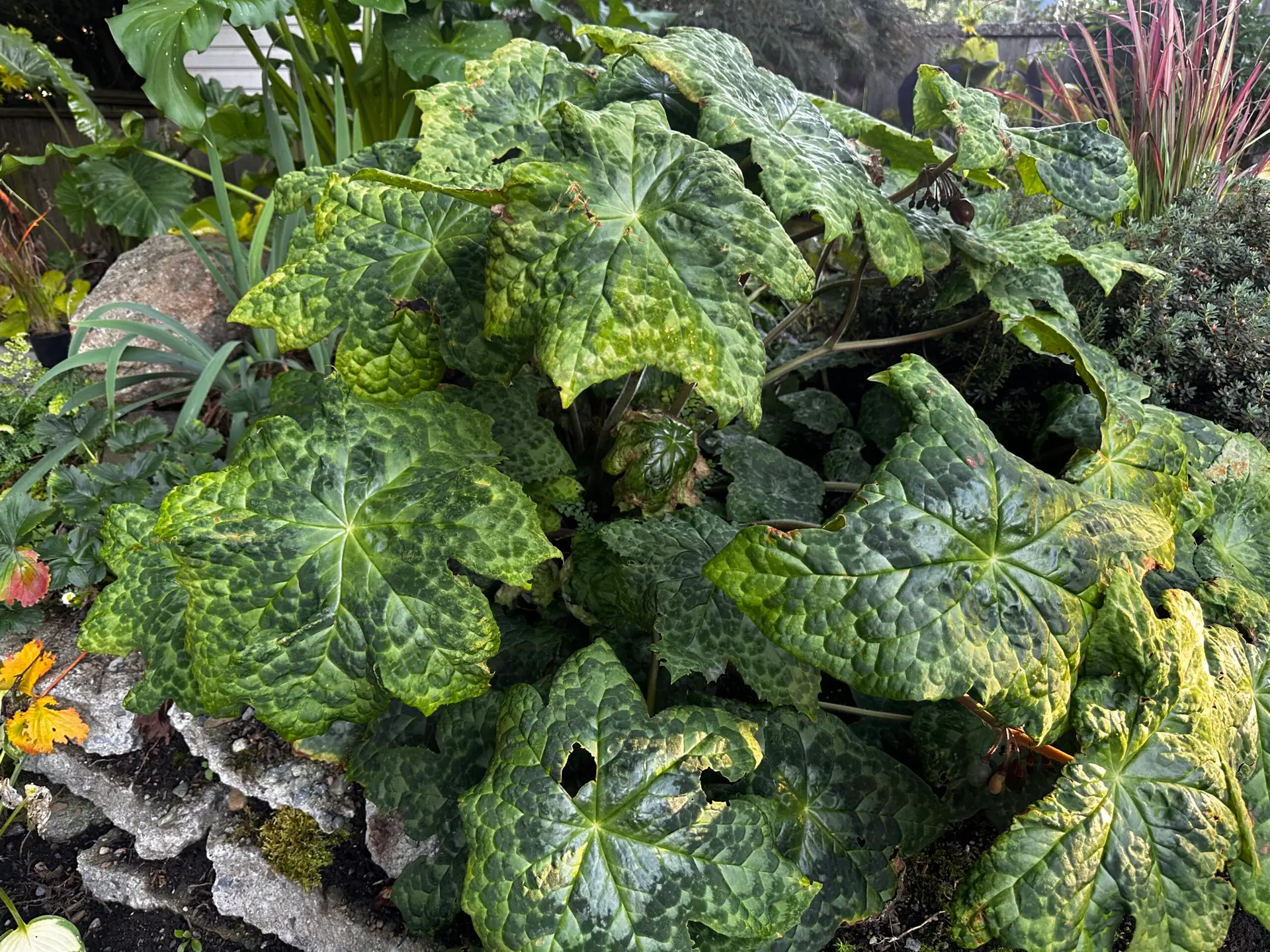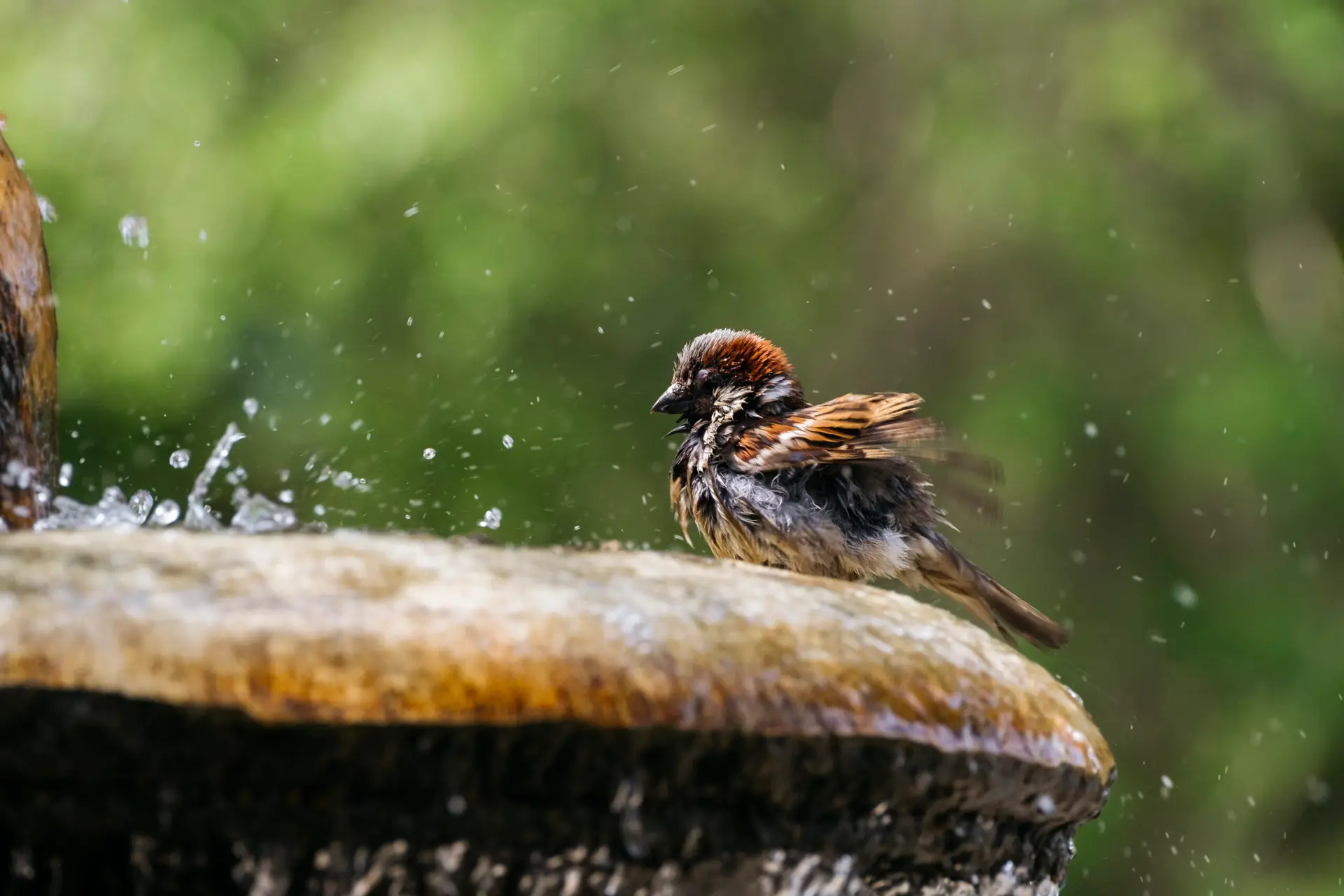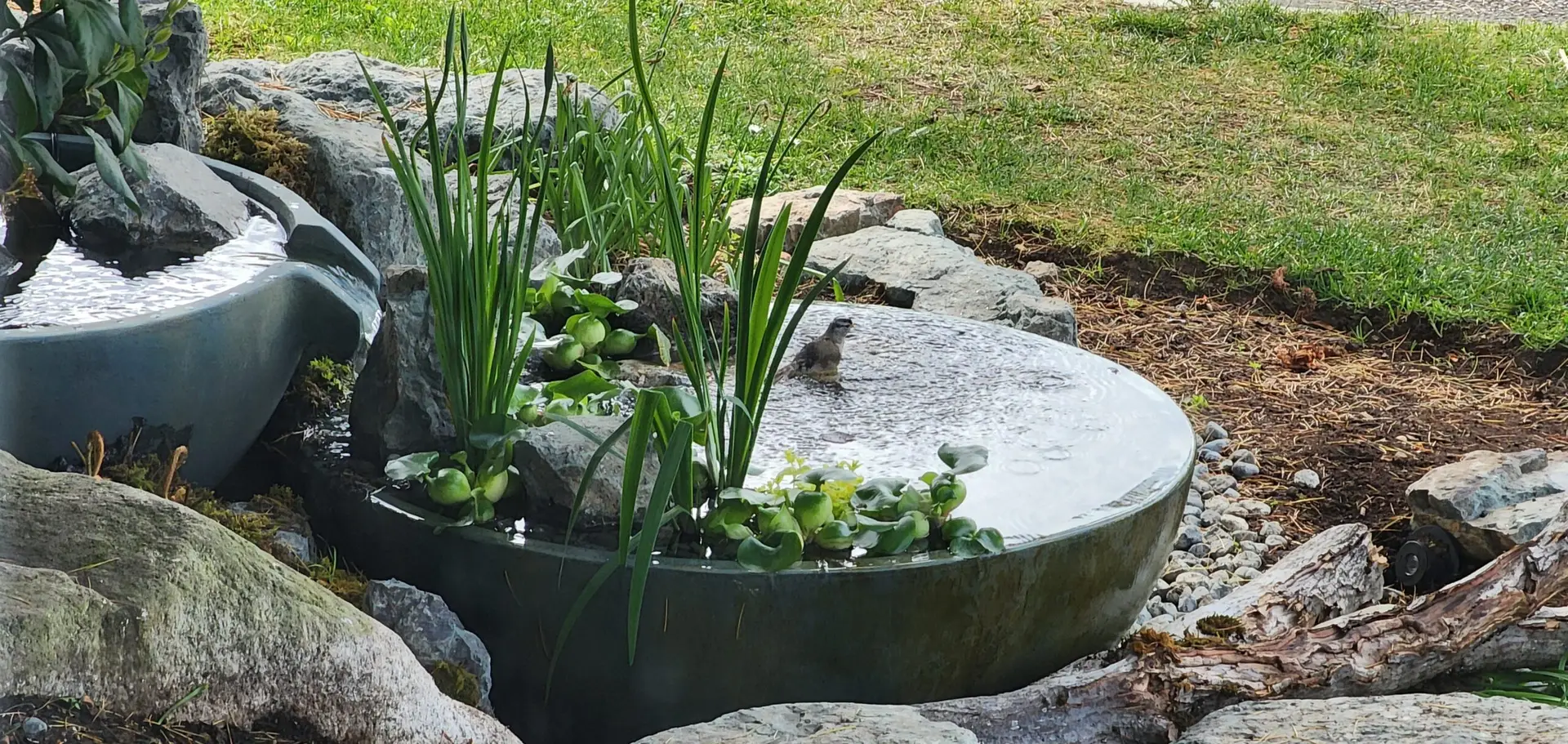
Asian Mayapple
Back to Plant Library Podophyllum cv. ‘Kaleidoscope’ Description Large, umbrella-like leaves unfurl in spring with marbled patterns of green, bronze,

Birds need water every day, just like we do. They drink it, they bathe in it, and they rely on it to survive long migrations and tough seasons. For homeowners on Central Vancouver Island, adding a fountain to your yard is one of the simplest ways to make your space more attractive to local and migratory bird species. Some birds love the calm of a classic bird bath, while others can’t resist the sparkle and sound of moving water. A garden fountain can do both to bring more birds to your yard.
Research from the Cornell Lab of Ornithology notes that many birds are drawn to the sight and sound of dripping or flowing water.
A fountain mimics the natural cues birds instinctively respond to. The gentle sound of trickling water carries through your yard, attracting species that might not otherwise stop. Moving water signals freshness and safety while staying oxygenated, reducing algae and bacteria and making it a healthier choice for birds than still water.

Different species interact with fountains in different ways:
Chestnut-backed Chickadee (Poecile rufescens), Song Sparrow (Melospiza melodia), and House Finch (Haemorhous mexicanus) will perch on the rim of a fountain to sip.
American Robin (Turdus migratorius) is famous for splash-bathing—using shallow edges or bowls to clean its feathers.
Rufous Hummingbird (Selasphorus rufus) does not wade. Instead, it hovers at fine sprays or briefly perches at the edge to drink.
Want to explore more ways to attract birds to your yard? Join our free 5-part email series.
Adding a fountain to your garden does more than decorate, it supports the health of your local wildlife:
Year-round access: During Vancouver Island’s dry summers, natural seeps can vanish. In winter, small streams may freeze over. A fountain provides consistent, open water in every season.
Support for migration: Species like Rufous Hummingbirds rely on quick water stops during their long seasonal journeys north and south.
Improved habitat quality: Consistent water sources reduce stress for urban and suburban birds by offering a reliable place to drink and bathe.

Discover which birds on Vancouver Island are most drawn to fountains get the free 5-part email series.
A classic bird bath gives birds a calm place to drink and bathe—but it requires frequent scrubbing to stay clean, and the still water can invite mosquitoes.
A fountain offers the best of both worlds. A shallow basin and ledge provide the calm surface many birds prefer, while the gentle motion of recirculating water creates sound and sparkle that draws in species that might not stop otherwise. Constant circulation keeps the water fresh, discourages mosquitoes, and makes it healthier for wildlife. Many bird experts recommend moving water as one of the most effective ways to invite a wider variety of birds into your yard.
Chestnut-backed Chickadee (Poecile rufescens) – common year-round visitor.
American Robin (Turdus migratorius) – abundant in summer, known for bathing.
Rufous Hummingbird (Selasphorus rufus) – migrates through in spring and summer.
Song Sparrow (Melospiza melodia) – one of the most frequent backyard visitors.
Moving water is one of the most reliable ways to make your yard a magnet for birds. Whether it’s robins splash-bathing in the shallows, chickadees sipping on the rim, or hummingbirds hovering at a fine spray, a fountain turns your outdoor space into a dependable stop for wildlife.
A professionally built fountain weaves these elements together in one feature: shallow ledges for bathing, gentle flows for drinking, and fresh circulation year-round. It’s an easy way to enjoy more close encounters with birds while adding beauty to your yard.
Sign up for our free 5-part email series on how moving water helps attract robins, chickadees, hummingbirds, and more right here on Vancouver Island.
You’ll get 5 practical tips, one every few days — then it’s done. No endless emails, no spam.

Back to Plant Library Podophyllum cv. ‘Kaleidoscope’ Description Large, umbrella-like leaves unfurl in spring with marbled patterns of green, bronze,

Back to Plant Library Farfugium japonicum ‘Giganteum’ Old Name: Ligularia tussilaginea Description Large, glossy, rounded leaves up to 18″ across